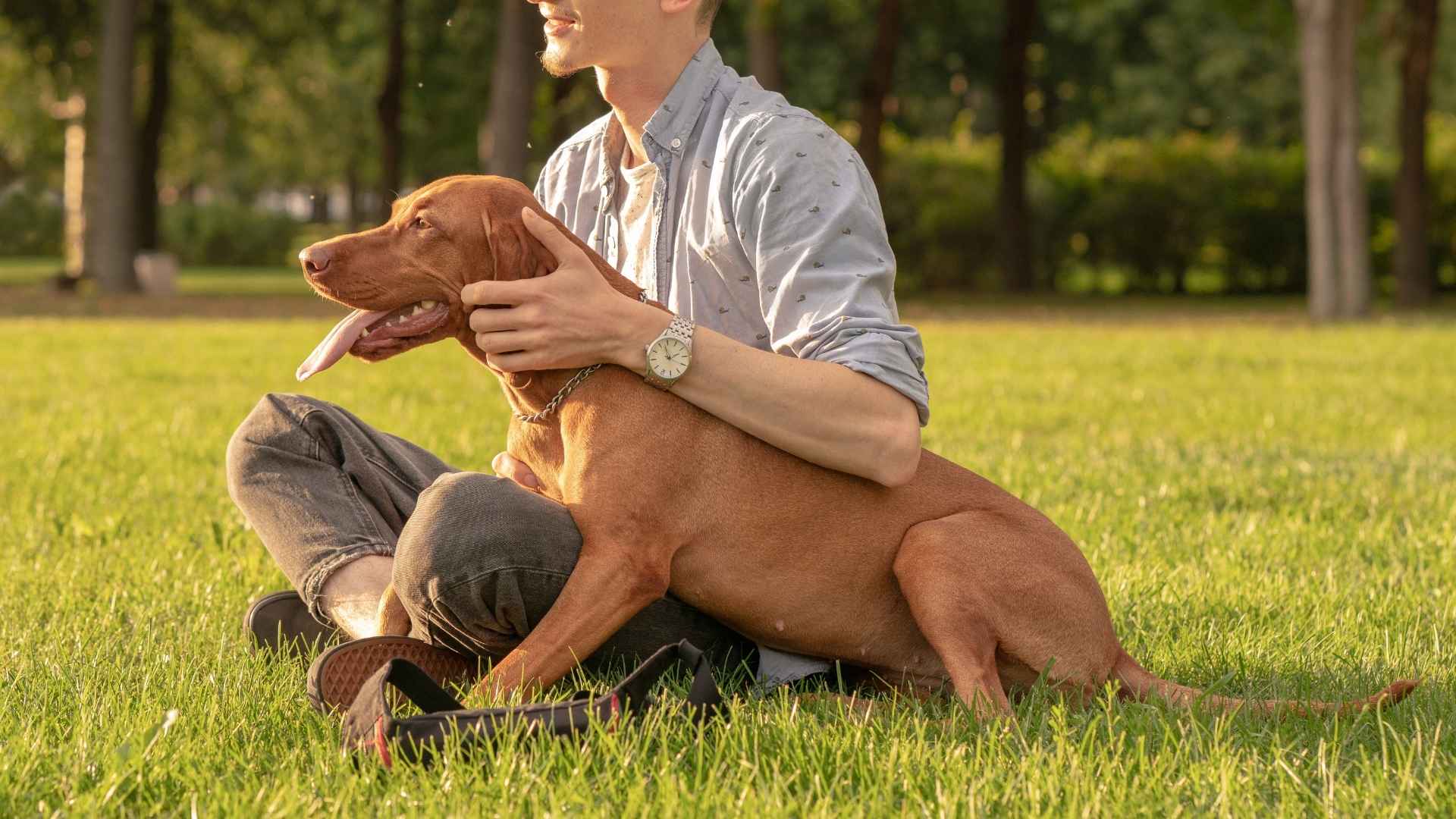Some dogs enjoy independence, happily lounging in another room or exploring the yard alone. Others, however, practically glue themselves to your side. These are the breeds often dubbed “Velcro dogs”—the ones that trail you from the kitchen to the bathroom, squeeze into your lap no matter how small they are, and sigh dramatically if you dare leave the room.
While every dog can show affection in their own way, certain breeds seem to crave constant closeness, making them the ultimate shadows. These loyal pups don’t just want to be near you—they need to be near you, offering unwavering companionship and expecting the same in return.
Understanding these deeply attached breeds helps pet parents provide the right balance of love, attention, and structure. Whether you adore having a furry shadow or want to better manage your dog’s clingy tendencies, learning about these “little puppy” personalities will give you a new appreciation for just how strong the human-canine bond can be.
Dog Breeds That Stay Attached Like Little Puppies
1. Border Collie
The Border Collie, often called the “workaholic of the dog world,” is one of the most intelligent and loyal breeds you’ll find. The AKC describes the Border Collie as an energetic and affectionate breed.
Originating from the borderlands between Scotland and England, this agile herder was bred to manage flocks with precision and endless energy. Standing between 18 and 22 inches tall and weighing 30 to 55 pounds, the breed is lean, athletic, and built for action.
Their striking coats, which can be black-and-white, red-and-white, tricolor, or even merle, hint at the elegance and drive within. Known for forming incredibly tight bonds, Border Collies tend to “velcro” themselves to their humans, rarely straying too far from those they love. With a life span of 12 to 15 years, they can be a devoted companion for over a decade.
Care Needs
Border Collies need consistent mental and physical challenges to stay happy. Their boundless energy means they thrive on long walks, herding games, and puzzle toys.
Without enough stimulation, they may channel their intelligence into chewing or digging. Regular grooming, including weekly brushing to manage their medium double coat, keeps them looking their best.
Did you know? A Border Collie named Chaser learned over 1,000 words and is celebrated as one of the smartest dogs in the world.
2. Pug
The Pug, also called the Mops in Germany or Doguillo in Spain, is a toy breed with roots tracing back to ancient China, where it was cherished by royalty and even gifted to outsiders as a sign of high honor. Standing about 10–13 inches tall and weighing 14–18 pounds, this small but sturdy dog is instantly recognizable by its wrinkled face, round head, and tightly curled tail.
Pugs boast short, glossy coats in shades like black, apricot fawn, or silver, often accented by a signature black mask. Known for their warm, clownish nature and affectionate temperament, these little charmers thrive as companions, forming intense bonds with their humans and rarely leaving their side.
With a lifespan of 13–15 years, they’re perfectly suited for families, seniors, and anyone seeking a devoted “Velcro dog.” PetMD explains that Pugs are an extremely sociable breed that loves receiving attention from their owners.
Care Needs
Pugs may not be high-energy, but they still require daily walks and playtime to stay fit and avoid weight gain. Their short coats need minimal grooming, but their skin folds should be cleaned regularly to prevent irritation. Despite their sturdy appearance, Pugs are sensitive to heat and mustn’t be overexerted.
Did you know? Pugs were mascots of Holland’s House of Orange after one famously saved Prince William of Orange’s life by warning him of an attack.
3. Australian Shepherd
The Australian Shepherd, often affectionately called the “Aussie,” is a medium-sized herding dog that originated in the western United States, despite its name. Purina describes Australian Shepherds as intelligent, energetic, and highly focused on their work.
Developed in the late 1800s, this agile and intelligent breed was prized by ranchers for its unmatched ability to herd and guard livestock. Aussies stand about 18–23 inches tall and weigh between 40–65 pounds, with striking coat patterns that range from black to blue or red merle, often paired with captivating eyes in shades of blue, amber, or brown, sometimes each a different color.
Known for their natural herding instincts and unshakable loyalty, Australian Shepherds are “Velcro dogs,” often sticking close to their humans as if glued. Their life span typically ranges from 12–15 years.
Care Needs
Aussies are high-energy dogs that thrive on structure, activity, and attention. They need daily mental challenges and physical exercise—long walks, play sessions, or agility activities are essential to keep them happy.
Without enough stimulation, they may resort to herding children, other pets, or even chasing shadows. Weekly brushing helps manage their medium-length coat, and more frequent grooming is needed during shedding seasons.
Did you know? Aussies are closely tied to cowboy culture and remain a fixture on rodeo circuits across the U.S.
4. Doberman Pinscher
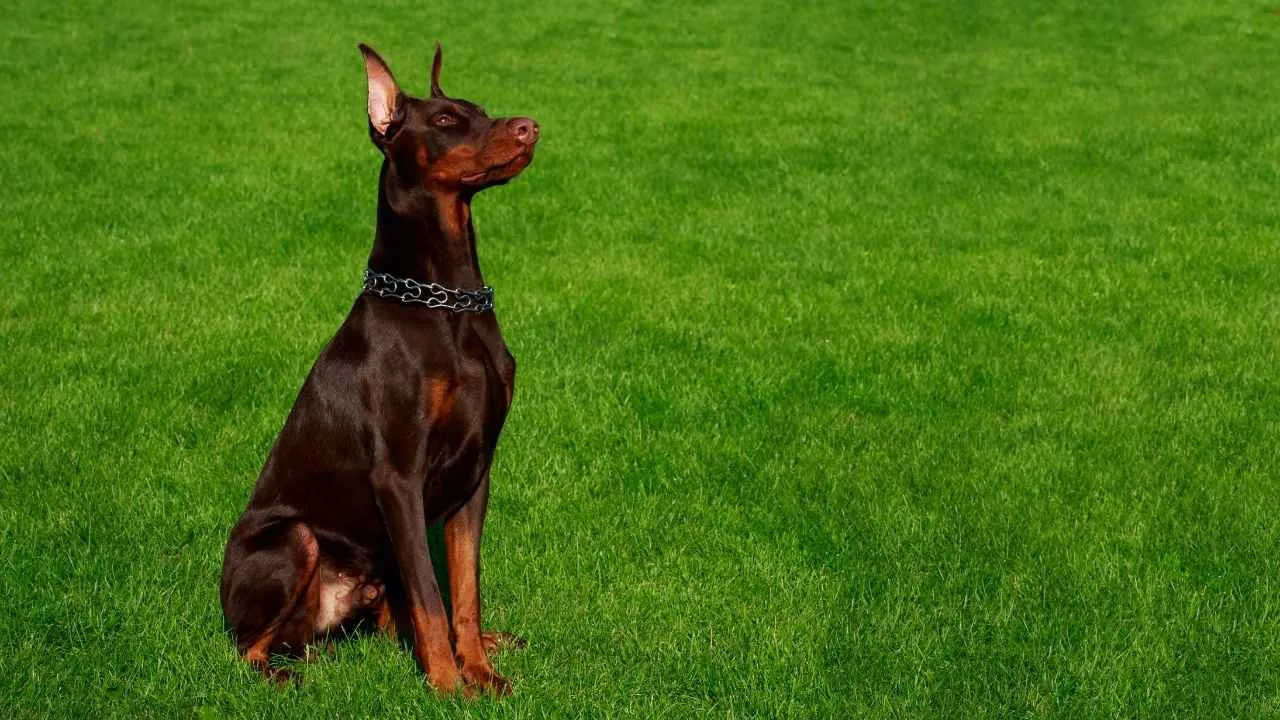
The Doberman Pinscher, often called the Doberman or Dobie, is a sleek and powerful working dog developed in Apolda, Germany, around 1890 by Karl Friedrich Louis Dobermann. Originally bred for protection and companionship, this breed’s athletic build and fearless demeanor contrast with its surprisingly affectionate and loyal personality.
Standing 24–28 inches tall and weighing 60–100 pounds, Dobermans are muscular yet elegant, with a short, smooth coat in colors like black, blue, red, or fawn marked with rust accents.
Known for their intelligence and alertness, they form intense bonds with their people, often shadowing them like oversized lap dogs. With a lifespan of 10–12 years, they thrive on human connection and structure, making them one of the most devoted “Velcro dogs.”
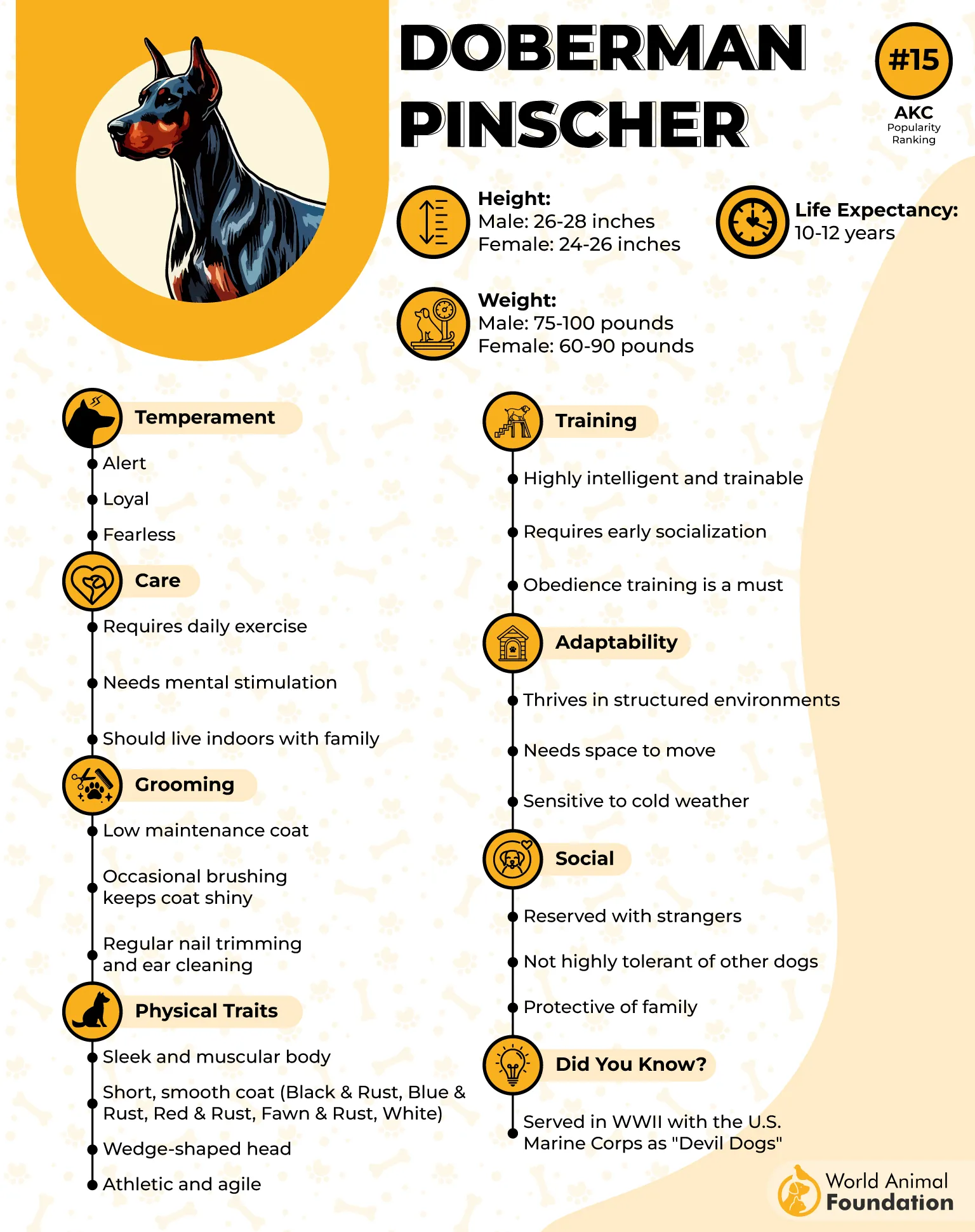
Care Needs
Dobermans have low-maintenance coats that benefit from weekly brushing, but their teeth should be cleaned at least twice a week to prevent dental issues.
This sensitive breed responds poorly to harsh training; positive reinforcement is key to building trust and confidence. They need mental stimulation and consistent interaction to prevent clingy behavior from turning into separation anxiety.
Did you know? A Doberman named Kurt was the first war dog killed during the 1944 Battle of Guam and is honored with a bronze statue at the National War Dog Cemetery.
5. German Shepherd
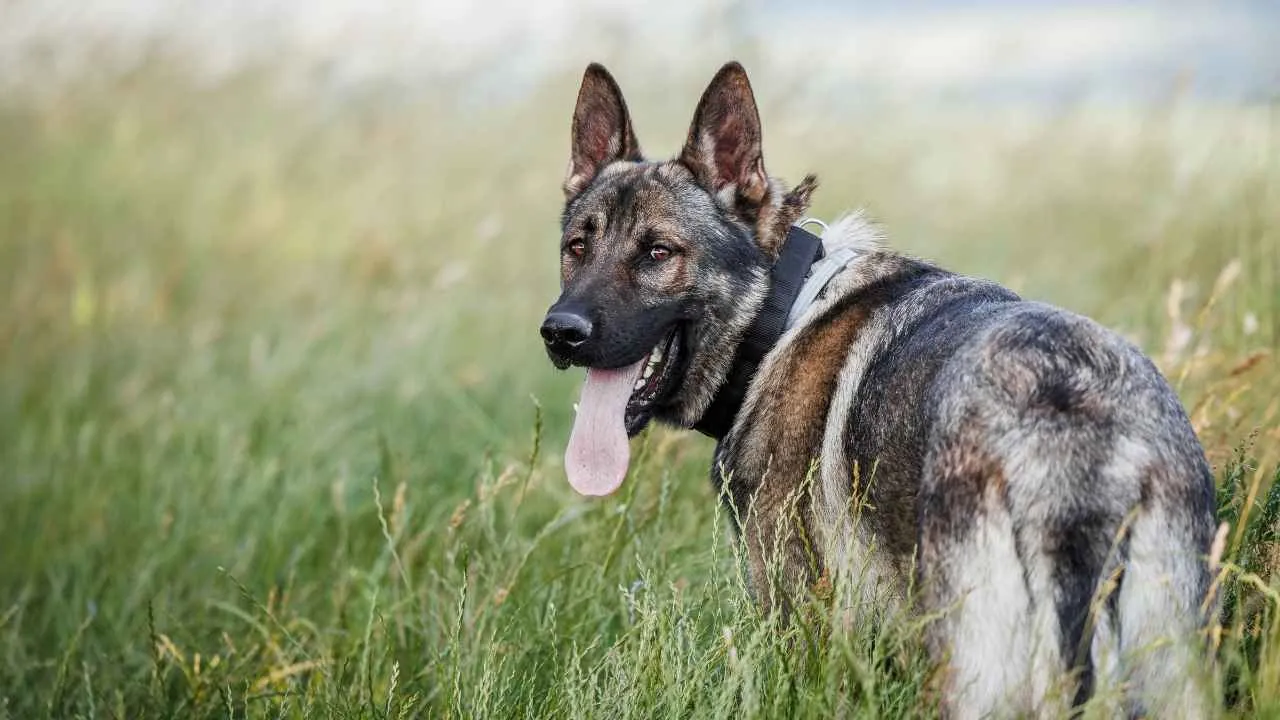
The German Shepherd, often referred to as the Alsatian, is one of the world’s most recognizable working breeds. Originating in Germany, this herding dog stands 22–26 inches tall and weighs between 50–90 pounds. Known for its intelligence, loyalty, and protective instincts, the German Shepherd has a storied history as a herder, police dog, military service companion, and even a guide for the visually impaired.
With their confident stance and athletic frame, they exude strength and purpose—yet they are surprisingly sensitive and deeply bonded to their families. These dogs crave human interaction and often form “shadow-like” attachments, following their owners from room to room.

Care Needs
German Shepherds thrive on structure and engagement. They require plenty of daily exercise, at least 60 minutes, and mental challenges to prevent boredom-induced mischief. Their double coat sheds heavily, with seasonal “blowouts” in spring and fall requiring extra brushing.
Socialization from puppyhood is vital to curb anxiety and ensure they develop into balanced adults. These loyal companions can become clingy, even developing separation anxiety if left alone too often, so they’re best suited for active owners who can meet their physical and emotional needs.
Did you know? A German Shepherd named Orient helped Bill Irwin, a blind hiker, complete the entire Appalachian Trail in 1990.
6. Vizsla
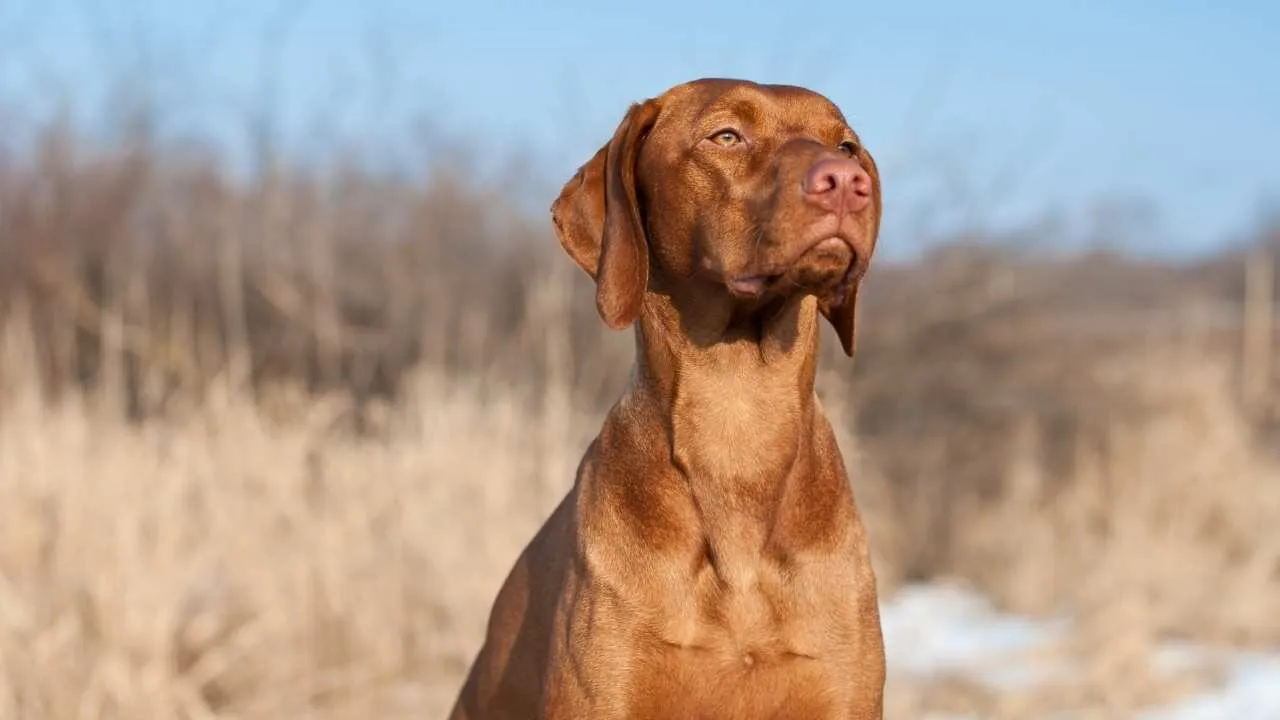
The Vizsla, also known as the Hungarian Vizsla or Magyar Vizsla, is one of the oldest known hunting dogs, with origins tracing back over a thousand years to the Magyars of Hungary. Standing 21–24 inches tall and weighing between 44–60 pounds, this sleek, reddish-gold sporting breed is as graceful as it is affectionate.
Once prized by nobility for its ability to point and retrieve game, the Vizsla has evolved into a deeply devoted companion dog. Their loyalty has earned them the nickname “Velcro Vizsla,” as they tend to stick close to their owners, following them from room to room. With a life span of 12–14 years, they are both energetic and loving—an ideal choice for active households.
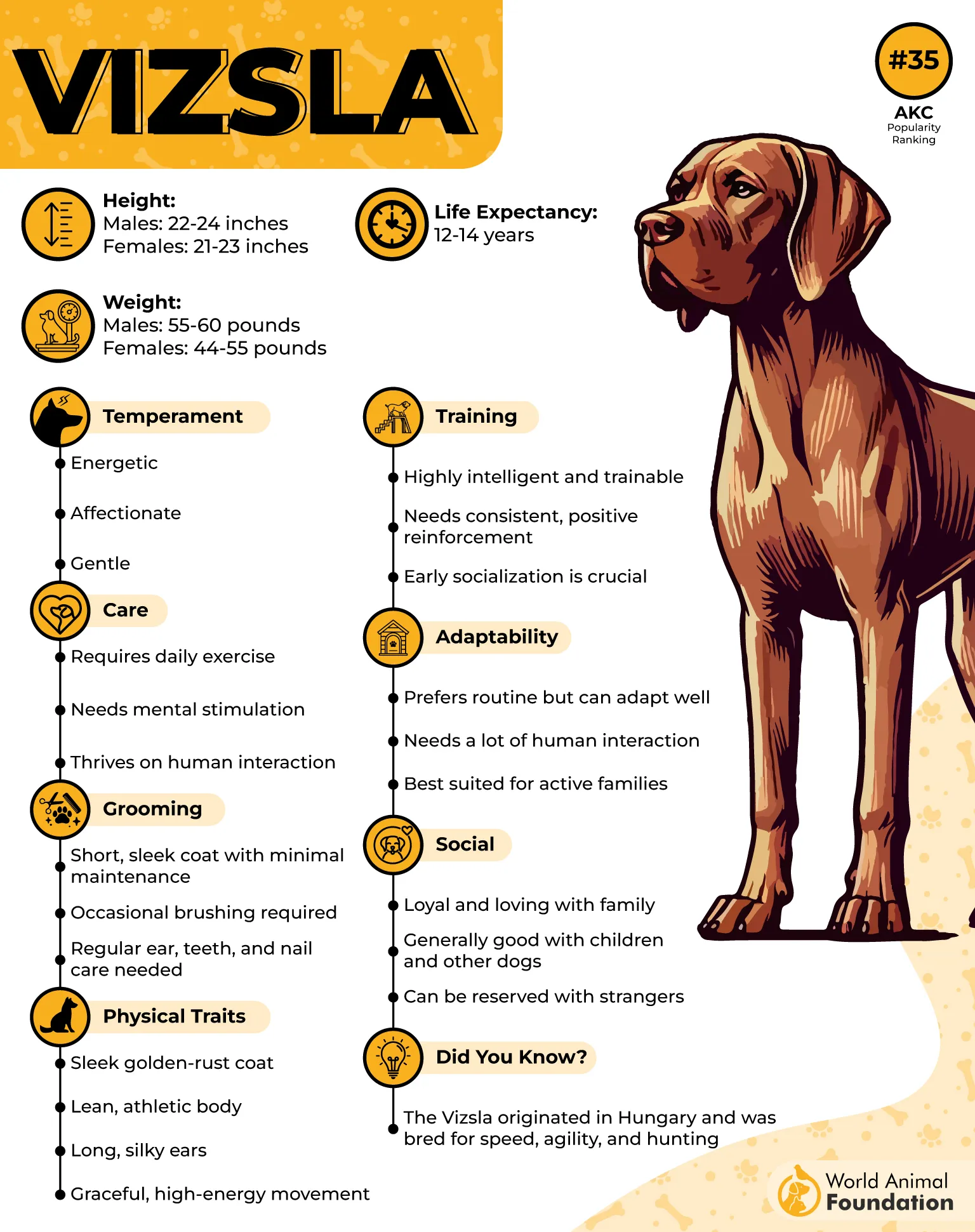
Care Needs
Vizslas thrive on routine and require significant physical and mental stimulation. Long runs, hikes, or agility training are essential to prevent boredom and anxiety, which can lead to destructive behaviors.
They are also sensitive dogs who crave affection and reassurance, making them happiest when included in daily family life. Their short, sleek coat requires minimal grooming, but regular brushing keeps it healthy.
Did you know? By 1900, Vizslas were on the brink of extinction, but they were revived from a small number of surviving dogs and earned the title “Gift of Kings.”
7. Golden Retriever
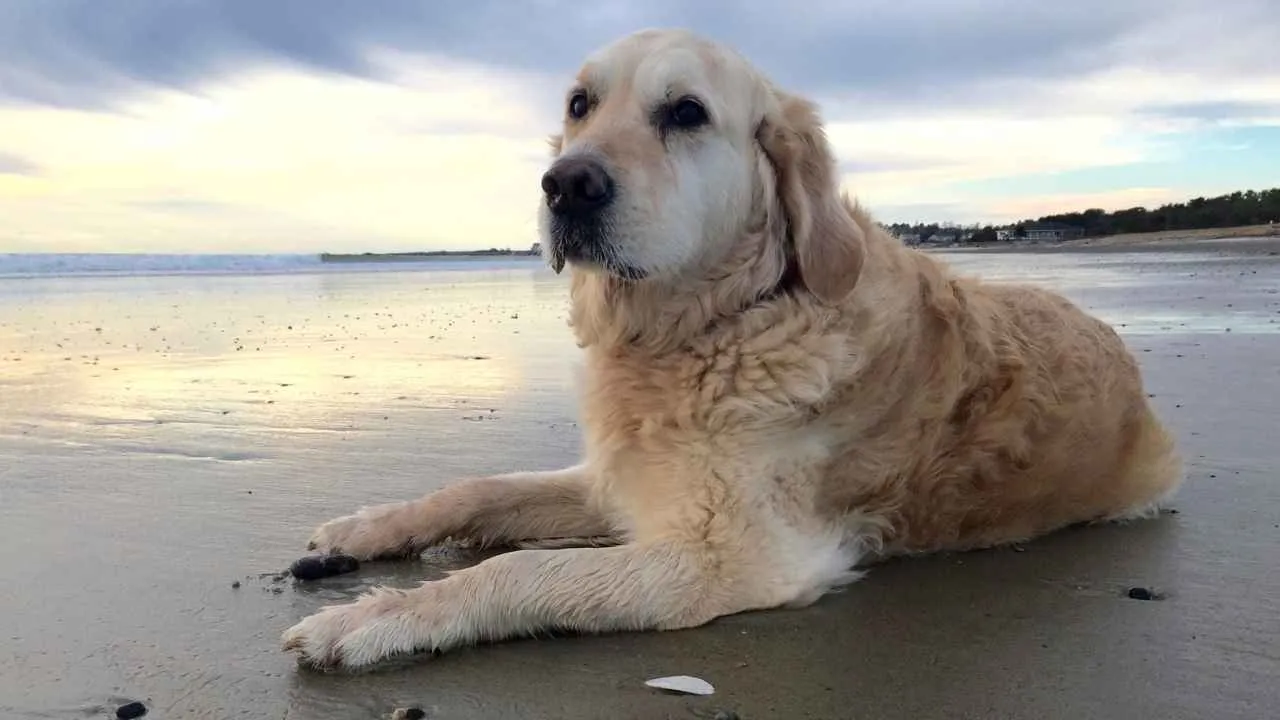
The Golden Retriever, often called simply the “Golden,” is one of the most beloved breeds worldwide, famed for its unwavering friendliness and devotion. Developed in 19th-century Scotland as a gundog and water retriever, this sporting breed quickly became a family favorite for its gentle temperament and willingness to please.
Standing between 21.5 and 24 inches and weighing 55 to 75 pounds, Goldens boast a thick, water-resistant double coat that ranges from pale cream to deep gold. With a lifespan of 10–12 years, they are intelligent, eager-to-please companions who thrive when included in every aspect of their owners’ lives.

Care Needs
Golden Retrievers are active “Velcro dogs,” happiest when by your side. They need about two hours of exercise daily—long walks, swimming, or games of fetch keep them mentally and physically satisfied.
Their lush double coat sheds heavily, requiring frequent brushing to prevent mats and tangles. Because of their people-oriented nature, they don’t like being left alone for long periods, and without engagement, they may turn to destructive behaviors.
Did you know? Every Golden Retriever alive today can trace its lineage back to a litter born in 1868 at Guisachan House in the Scottish Highlands.
Conclusion
Some dogs form bonds so deep they practically become your shadow, and the breeds that stay attached like little puppies embody that devotion every single day. Whether it’s a Yorkshire Terrier curling into your lap, a Pomeranian following your every move, or an Italian Greyhound seeking constant closeness, these dogs thrive on human companionship. Many of them don’t just see you as their owner—they see you as their entire world, making them quintessential lap dogs with large personalities packed into small, cuddly frames.
These breeds may stick like glue, but with patience and crate training, they can learn to balance their clinginess while still offering the love that makes them such perfect human companions. Even Velcro breeds, like the Labrador Retriever, crave the same closeness, proving that attachment isn’t about size—it’s about heart. From the regal history of Queen Victoria’s beloved lap dogs to the devotion of modern French Bulldogs, these pups remind us why they’re not just pets—they’re lifelong friends and family members.


